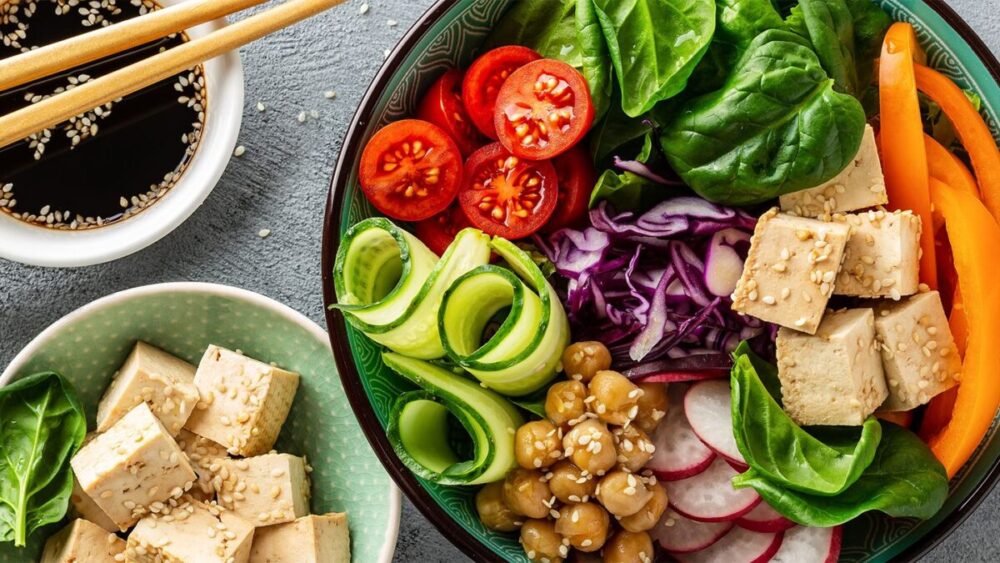
Navigating the path toward a life nourished by plants can be both exciting and a little daunting. It’s a path that often leads to increased health benefits, ethical alignment, and a softer footprint on the planet. Yet, diving into such a lifestyle change requires careful planning and knowledge. This guide aims to shed light on the essential aspects of adopting this way of eating. The following sections are filled with rich insights and practical tips to make the transition smoother and enjoyable for everyone.
1. Building a Balanced Plant-Based Plate
If you want to live healthy as a result of a plant-based lifestyle, you must know how to do it right. Plant-based nourishment doesn’t mean merely removing animal products from your diet; it’s about embracing a variety of nutrient-dense foods. Whole grains, vegetables, fruits, nuts, and seeds become the stars of your meals. Finding the right balance ensures that your body receives the essential nutrients. To build a balanced plate, think in terms of color, texture, and nutrition. Combine leafy greens with grains, sprinkle in some nuts, and add a splash of healthy fats.
Creating harmony in your dishes involves more than taste; it’s about nurturing your body too. Start with half a plate filled with vegetables, a quarter with whole grains, and the remaining quarter with protein-rich plants like legumes or tofu. Round it off with healthy fats like avocados or olive oil. Remember, every meal doesn’t need to be perfect, but aiming for a balance keeps you energized and nourished.
2. Essential Nutrients for Plant-Based Living

Nourishing yourself with a plant-centered diet requires attention to specific nutrients that might need supplementing or a targeted approach. Vitamin B12, Omega-3, Iron, Calcium, and Vitamin D are a few nutrients to keep an eye on. Consuming fortified foods, eating nutrient-rich plants, and sometimes adding a supplement under professional guidance can fill the gaps.
Aiming for diversity in food choices is crucial in meeting nutritional needs. Spinach, kale, almonds, and fortified plant milk are great for calcium. For iron, opt for lentils, chickpeas, and vitamin C-rich fruits to aid absorption. Understanding these specific nutritional nuances makes your plant-based journey not only healthy but ensures that your body thrives.
3. Exploring Plant-Based Protein Sources
The question of protein in a plant-centered diet often looms large. Yet, nature offers an abundance of protein-rich plants that cater to our bodily needs. From legumes, such as lentils and chickpeas, to whole grains like quinoa and brown rice, the options are plentiful. These protein powerhouses are also packed with additional vitamins and fiber, making them a nutritious choice.
Plant-based proteins need not be restricted to beans and grains. Nuts, seeds, tofu, tempeh, and even green peas offer significant protein. Merging these into your daily meals ensures you receive the necessary amino acids. Protein needs vary from person to person, so understanding your unique requirements and adapting your diet accordingly is key to thriving on a plant-centered regime.
4. Navigating Plant-Based Grocery Shopping
Grocery shopping for a plant-centered diet presents a delightful exploration of flavors and foods. Your focus shifts from traditional animal-based products to a colorful array of fruits, vegetables, grains, and more. However, it can be overwhelming without some navigation skills. Planning your meals and creating a detailed shopping list centered around whole, unprocessed foods can be your guide.
Shopping for plant ingredients may initially seem expensive, but some strategies can make it budget-friendly. Buying in bulk, choosing seasonal produce, and even growing your herbs or vegetables can save money. With these strategies, you’ll not only nourish your body with wholesome foods but also find joy in discovering new tastes and textures.
5. Cooking Delicious Plant-Based Meals

The art of preparing plant-based dishes opens up a new culinary adventure. Utilizing fresh herbs, spices, and unique cooking techniques can transform simple ingredients into delectable meals. Begin by recreating your favorite traditional dishes using plant alternatives. Experiment with spices, embrace global cuisines and allow your creativity to flow in the kitchen.
The second half of this culinary journey lies in embracing whole foods and minimizing processed alternatives. While convenient, heavily processed plant-based products often lack nutrients and can be high in additives. Focus on creating meals from whole, fresh ingredients. YouTube tutorials, cooking classes, or plant-centered cookbooks can be excellent resources to spark inspiration.
6. Eating Out on a Plant-Based Diet
Dining out while adhering to a plant-centric lifestyle is feasible and enjoyable with a bit of planning. Many restaurants are now offering diverse plant-friendly options. Before heading out, check the menu online, or call ahead to inquire about modifications. This ensures a smooth dining experience and shows restaurants the growing demand for plant-based offerings.
Your social dining experiences needn’t be restricted by your dietary preferences. Exploring ethnic cuisines such as Thai, Indian, or Middle Eastern often leads to numerous plant-centered options. Communicate your preferences clearly with the staff, and don’t hesitate to explore. With time, you’ll find your favorite spots that align with your tastes and nutritional philosophy.
7. Overcoming Challenges and Temptations
Transitioning to a plant-centric way of eating doesn’t come without its obstacles and cravings. It’s a process, and understanding that it doesn’t have to be an overnight change can ease the pressure. Start gradually by incorporating meatless days and slowly expanding from there. Listen to your body and adapt as you go.
Temptations are natural, especially when familiar smells and sights surround you. Having a strong understanding of why you chose this path can be a powerful anchor. Is it for health, ethics, or the environment? Remind yourself of these reasons. Surrounding yourself with supportive communities or individuals can make this transition more comfortable and fulfilling.
8. Staying Healthy on a Plant-Based Journey

Health and well-being are at the core of a plant-centered lifestyle, yet maintaining them requires continuous mindfulness. Regular check-ups with healthcare providers who understand your nutritional choices are vital. Monitoring nutrient levels, adapting meals, and keeping yourself informed about the latest research ensures that your health remains optimal.
Mindfulness extends beyond nutrients. Your relationship with food, understanding portions, and enjoying the process of eating all play significant roles in a healthy lifestyle. Engaging with the food you consume, appreciating the nourishment it provides, and tuning in to how your body feels cultivates a deeper connection to your plant-based journey.
Final Thoughts
Embarking on a plant-based lifestyle is an enriching journey that extends beyond the plate. It’s about aligning your values, nourishing your body, and embracing a harmonious way of living with our planet. The complexities fade as you delve deeper, and what remains is a profound sense of well-being and purpose. May this guide serve as a practical companion on your path, illuminating the way and making the transition a joy-filled adventure. Happy plant-based living!








